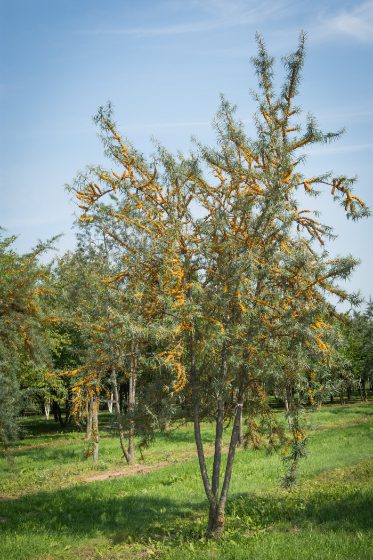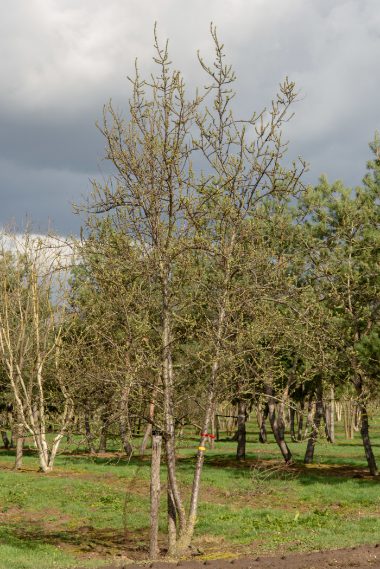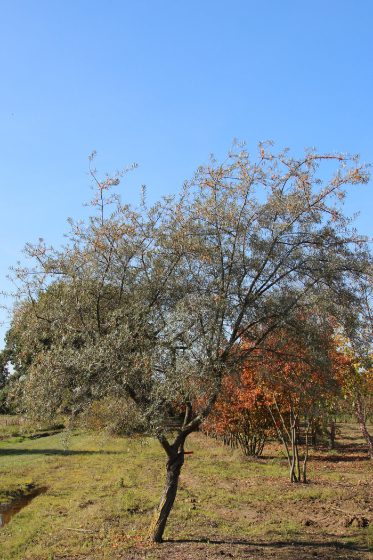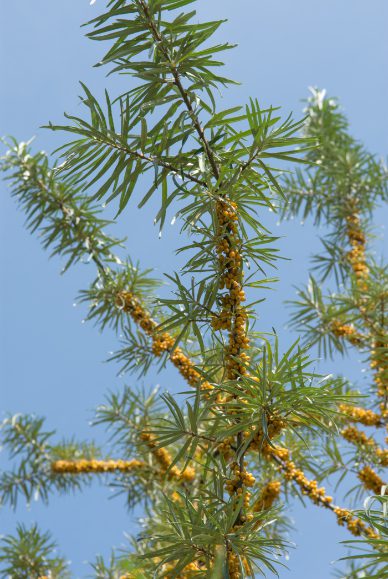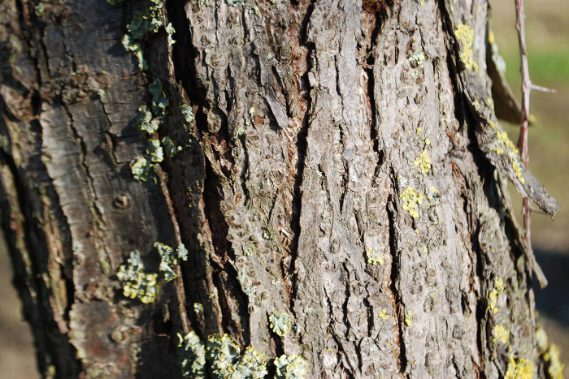Hippophae rhamnoides | Sea Buckthorn
Hippophae rhamnoides, native to the cold regions of Europe and Asia, is a large, deciduous shrub or small tree that can be seen growing wild on sand dunes along the UK coastline. It has narrow, willow-like, silvery leaves and thorny shoots, and the leaves turn yellow in autumn. In early spring there are very small, yellow-green flowers in racemes followed by small, brightly coloured orange berries clustered thickly on the branches from autumn to February. Adaptable to a wide range of soil, even poor soil conditions, the Hippophae rhamnoides is very hardy and tolerant of: salt winds, exposure, altitude, flooding and drought, and is very low maintenance, making it a perfect choice for coastal area, reclaimed land and shelterbelts. This tree makes a striking winter statement in any garden.

